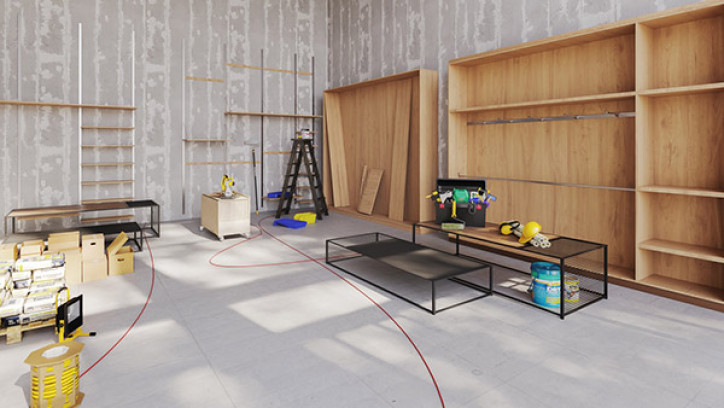1.2 Interior alterations to existing non-residential building

Building owner are able to make internal alterations to non-residential buildings, such as fit-outs of commercial properties, without a building consent.
A building consent is usually not required for internal alterations to a non-residential building (eg shop, office, library, factory, warehouse, church, or school).
This exemption does not apply to residential buildings, including communal residential buildings such as hotels, retirement villages, camping grounds, prisons and hospitals.
What the law says
Schedule 1 of the Building Act 2004
Exemption 10. Interior alterations to existing non-residential building
Building work in connection with the interior of any existing non-residential building (for example, a shop, office, library, factory, warehouse, church, or school) if the building work:
(a). does not modify or affect the primary structure of the building; and
(b). does not modify or affect any specified system; and
(c). does not relate to a wall that is:
(i). a fire separation wall (also known as a firewall); or
(ii). made of units of material (such as brick, burnt clay, concrete, or stone) laid to a bond in and joined
(iii). together with mortar; and
(d). does not include sanitary plumbing or drainlaying under the Plumbers, Gasfitters, and Drainlayers Act 2006.
How it works
If your proposed building work either modifies or affects the primary structure of the building or any specified system (such as sprinklers, fire alarms, exit signage or final exits), then you need a building consent.
In addition, your building work must not relate to a wall that is a fire separation wall (firewall) or a masonry wall (in essence, made of blocks joined together with mortar).
For example, if you want to cut an opening through a firewall to install a fire door, this does not meet the exemption conditions in subclauses (b) and (c)(i) and will need a building consent.
Because non-residential buildings are often complex, you should seek advice from people with experience in the building industry such as Registered Architects, Registered Building Surveyors or Chartered Professional Engineers if you are not sure whether this exemption applies. If you are still unsure, we suggest you talk to your local city or district council.
Installing new non load-bearing walls and partitions close to sprinkler heads, smoke or heat detectors may impact the effectiveness and compliance of these fire safety systems (which are specified systems). This type of building work will almost certainly require a building consent.
What is exempt
- The owner of a clothing store decides to do an internal fit-out which includes new shelving, clothes racks and simple low partitions. The proposed building work will not affect any existing specified systems and it meets the other requirements of this exemption. Therefore, a building consent is not required.
- A restaurant owner proposes an alteration that includes redecorating, new seating areas and an extension to the bar. As this building work does not affect or modify the primary structure or any installed specified systems (including firewalls), a building consent is not required.
What needs consent
- The owner of an office building proposes to install a fire door in a firewall that separates an escape route. A building consent will be required as the work affects and modifies an existing specified system.
- A commercial property owner wants to install some simple full height partitioning. This will involve relocating several fire sprinkler heads. As this building work is a modification to a specified system, a building consent will be required.
- A developer has built the shell of a new commercial building for several retail tenancies. One of the tenants wishes to fit out their retail space with full height partitioning and counters for customer service. As this is the first fit-out of a new building, the building work is considered to be new and not an interior alteration to an existing non-residential building. Therefore, the proposed building work is outside the scope of this exemption and will require a building consent.